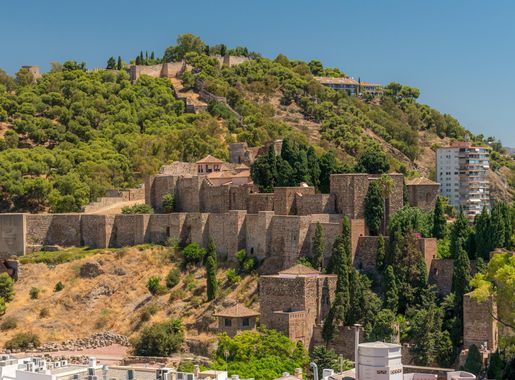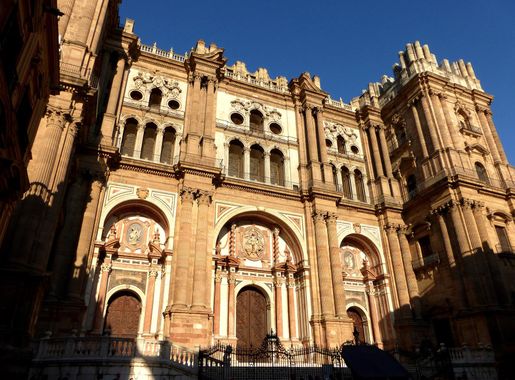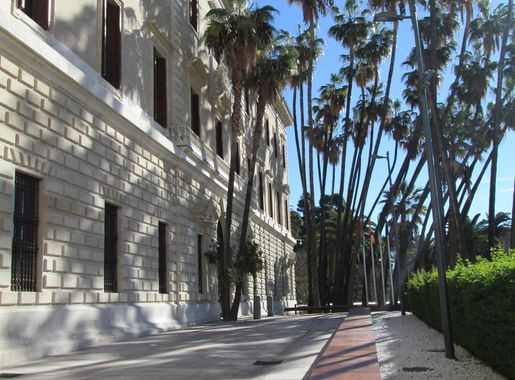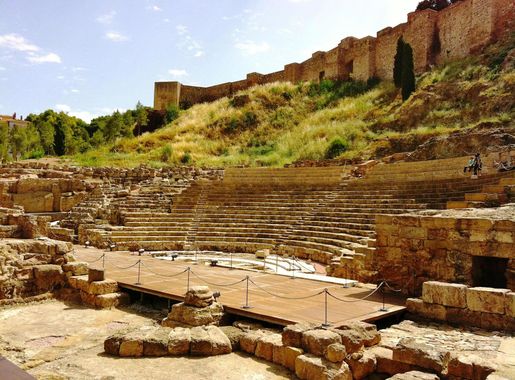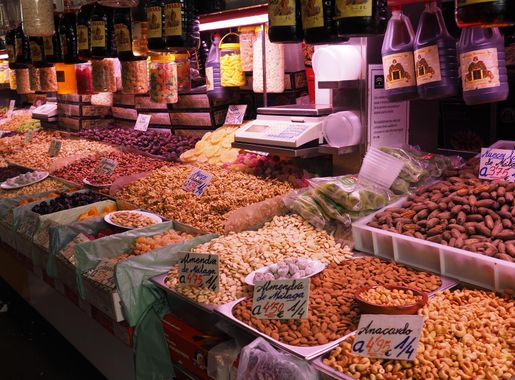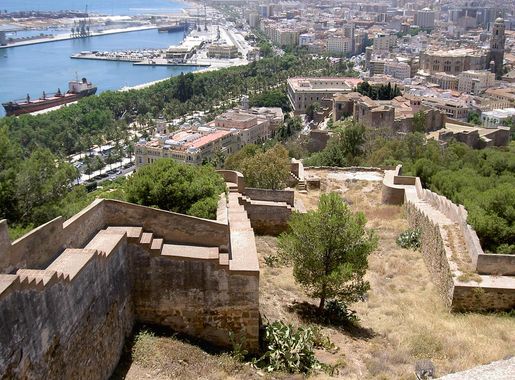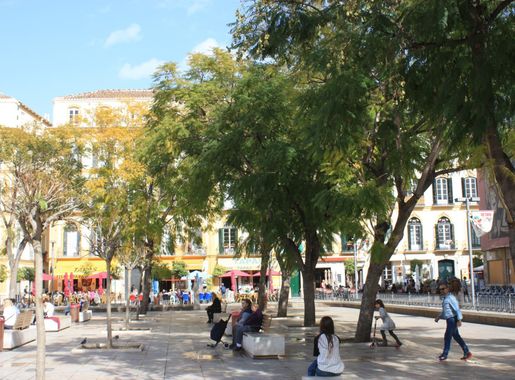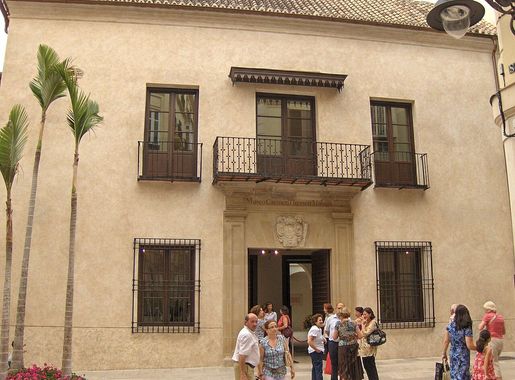
The Heart of Málaga: Málaga Centro
Discover Málaga Centro: A Blend of History, Art, and Modernity in the Heart of Málaga, Spain
Welcome to Málaga Centro, the vibrant heart of Málaga, Spain! This captivating neighbourhood offers a delightful blend of history, culture, and modernity, making it a must-visit destination for any traveller. Stroll through its charming streets and discover a world where ancient landmarks coexist with trendy shops, tapas bars, and contemporary art galleries. Málaga Centro is home to some of the city's most iconic attractions. Start your journey at the imposing Málaga Cathedral, known locally as 'La Manquita' due to its unfinished second tower. Just a short walk away, you'll find the Alcazaba, a stunning Moorish fortress with lush gardens and panoramic views of the city and the Mediterranean Sea. Don't miss the nearby Roman Theatre, a testament to the city's rich historical tapestry. Art enthusiasts will be enthralled by the Picasso Museum, which celebrates the life and works of Málaga's most famous son, Pablo Picasso. For a more modern art experience, visit the Centre Pompidou Málaga, a colourful cube offering contemporary art exhibits. After a day of sightseeing, unwind at one of the many plazas, such as Plaza de la Merced or Plaza de la Constitución, where you can enjoy a leisurely meal and watch the world go by. Málaga Centro also boasts a vibrant nightlife, with a plethora of bars, clubs, and live music venues catering to all tastes. Whether you're looking to dance the night away or enjoy a quiet drink with friends, this neighbourhood has something for everyone. And for those who love to shop, Calle Larios, the main shopping street, offers a mix of high-end boutiques and local stores, perfect for picking up unique souvenirs.
Local tips in Malaga Centro
- Visit the Alcazaba early in the morning to avoid the crowds and enjoy cooler temperatures.
- Wear comfortable shoes, as the cobblestone streets can be uneven and require a lot of walking.
- Take advantage of the free admission times at the Picasso Museum and the Centre Pompidou Málaga.
- Try the local tapas at El Pimpi, a famous bodega frequented by celebrities and locals alike.
- Use public transportation or walk, as parking can be challenging in the narrow streets of Málaga Centro.
The Heart of Málaga: Málaga Centro
Welcome to Málaga Centro, the vibrant heart of Málaga, Spain! This captivating neighbourhood offers a delightful blend of history, culture, and modernity, making it a must-visit destination for any traveller. Stroll through its charming streets and discover a world where ancient landmarks coexist with trendy shops, tapas bars, and contemporary art galleries. Málaga Centro is home to some of the city's most iconic attractions. Start your journey at the imposing Málaga Cathedral, known locally as 'La Manquita' due to its unfinished second tower. Just a short walk away, you'll find the Alcazaba, a stunning Moorish fortress with lush gardens and panoramic views of the city and the Mediterranean Sea. Don't miss the nearby Roman Theatre, a testament to the city's rich historical tapestry. Art enthusiasts will be enthralled by the Picasso Museum, which celebrates the life and works of Málaga's most famous son, Pablo Picasso. For a more modern art experience, visit the Centre Pompidou Málaga, a colourful cube offering contemporary art exhibits. After a day of sightseeing, unwind at one of the many plazas, such as Plaza de la Merced or Plaza de la Constitución, where you can enjoy a leisurely meal and watch the world go by. Málaga Centro also boasts a vibrant nightlife, with a plethora of bars, clubs, and live music venues catering to all tastes. Whether you're looking to dance the night away or enjoy a quiet drink with friends, this neighbourhood has something for everyone. And for those who love to shop, Calle Larios, the main shopping street, offers a mix of high-end boutiques and local stores, perfect for picking up unique souvenirs.
Iconic landmarks you can’t miss
Alcazaba
Discover the breathtaking Alcazaba of Málaga, a historic fortress that offers stunning views, beautiful gardens, and a glimpse into Spain's rich Moorish heritage.

Santa Iglesia Catedral Basílica de la Encarnación
Explore the stunning Santa Iglesia Catedral Basílica de la Encarnación, a magnificent blend of architectural styles and a symbol of Málaga's rich history.
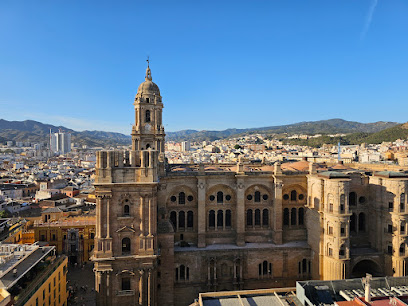
Monumento al Marqués de Larios
Experience the grandeur of the Monument to Marqués de Larios, a stunning tribute in the heart of Málaga that reflects the city's rich cultural heritage.
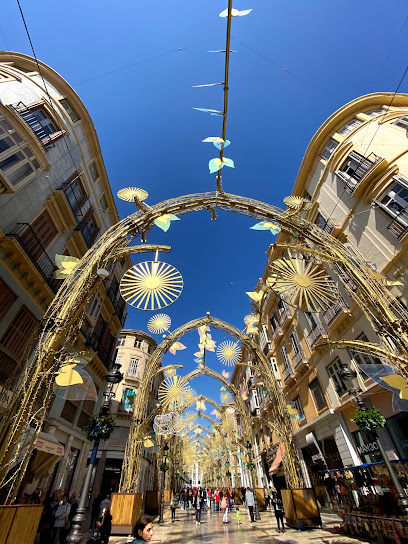
Fuente de las Tres Gracias
Explore the enchanting Fuente de las Tres Gracias in Málaga, where art, beauty, and vibrant city life blend seamlessly in a picturesque setting.
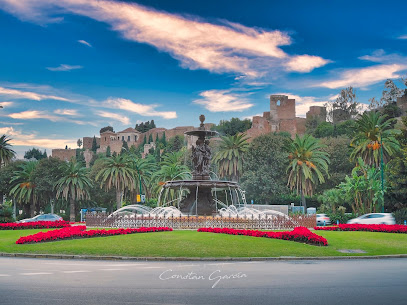
Jardines de Puerta Oscura
Explore the lush beauty of Jardines de Puerta Oscura in Málaga, a serene garden oasis perfect for relaxation and family outings.
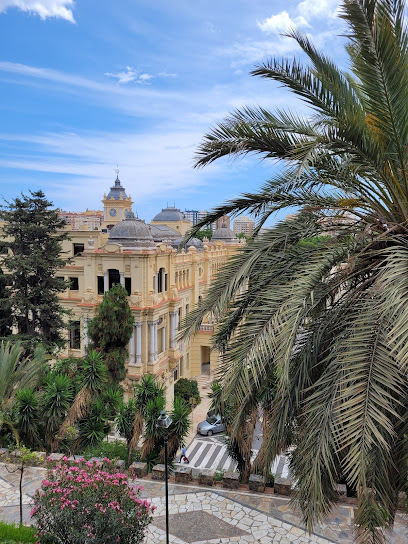
Centro de Málaga
Explore Centro de Málaga, a vibrant historical landmark filled with rich culture, stunning architecture, and delightful local cuisine in the heart of the city.
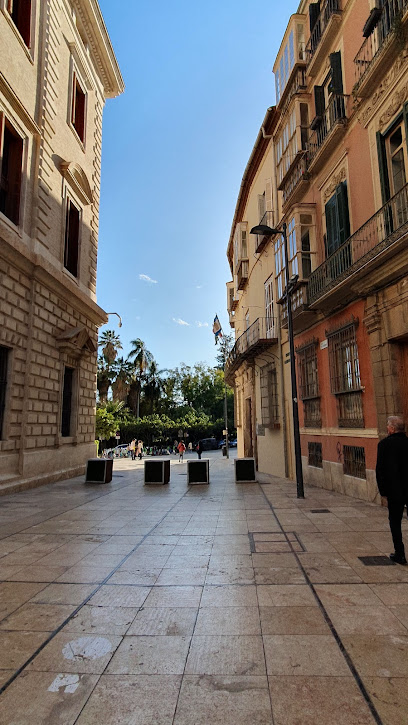
Torre del Homenaje
Discover the historical significance and breathtaking views of Torre del Homenaje, a must-visit landmark in Málaga's vibrant landscape.
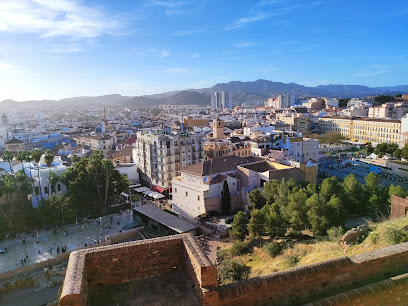
Monumento a Cánovas Del Castillo
Explore the Monumento a Cánovas Del Castillo, a stunning tribute to Spanish history and culture nestled in the heart of Málaga.
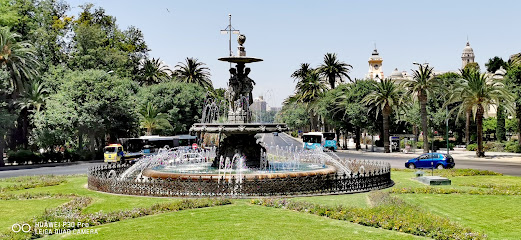
centro historico
Experience the rich heritage and vibrant culture of Málaga's Centro Histórico, where history comes alive in every corner.

Letras Malaga
Explore the artistic essence of Malaga at Letras Malaga, a vibrant scenic spot showcasing the city's rich literary heritage through stunning murals and artworks.
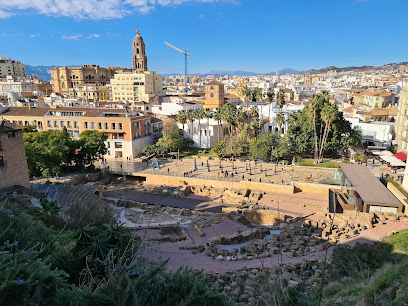
Pl. Jesús el Rico
Experience the heart of Málaga at Pl. Jesús el Rico, a charming square filled with local culture, history, and delightful culinary experiences.
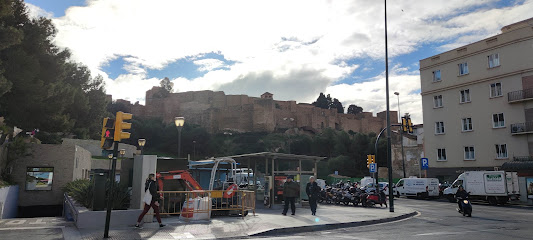
Malaga Loves Art (Dog)
Explore the heart of Malaga's artistic community at Malaga Loves Art, a unique tourist attraction showcasing contemporary art and local creativity.

Unmissable attractions to see
Málaga Park
Discover the serene beauty of Málaga Park, a lush urban oasis filled with exotic plants, vibrant gardens, and tranquil walking paths.
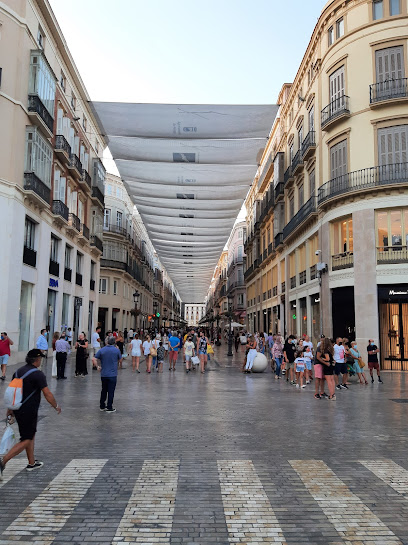
Malaga Museum
Discover the artistic heritage of Malaga at the Malaga Museum, a cultural landmark showcasing an array of historical and contemporary masterpieces.
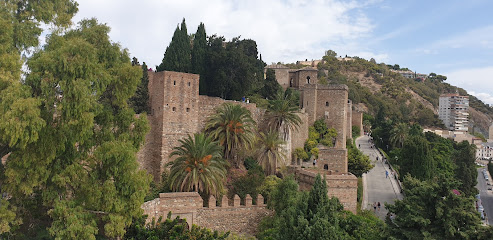
La Farola de Málaga
Explore La Farola de Málaga, an iconic lighthouse offering breathtaking views and a glimpse into the city's rich maritime heritage along the stunning coastline.
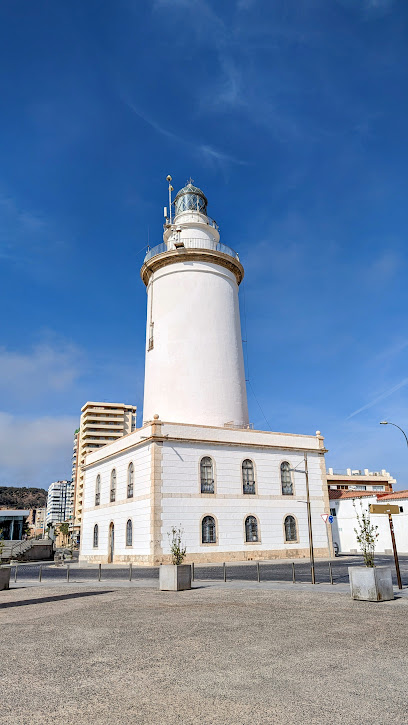
Malaga Loves Art (Dog)
Explore the vibrant world of creativity at Malaga Loves Art, a must-see tourist attraction in the heart of Malaga, celebrating local artistry and culture.

Essential places to dine
El Pimpi
Experience authentic Andalusian cuisine at El Pimpi, where tradition meets vibrant culture in the heart of Málaga.
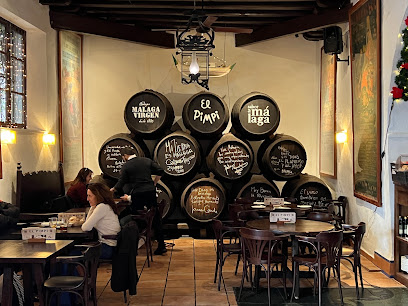
Casa Lola
Experience authentic Andalusian flavors at Casa Lola in Málaga, where every dish tells a story and every visit feels like home.
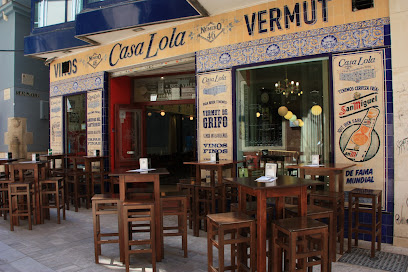
Antigua Casa de Guardia
Experience authentic Andalusian culture at Antigua Casa de Guardia - Málaga's historic tavern known for exquisite local wines and traditional tapas.
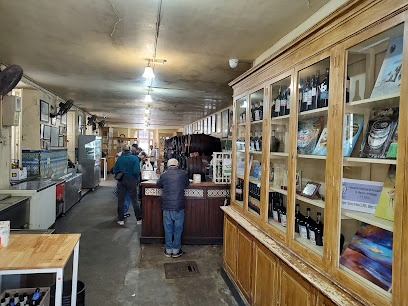
Cortijo de Pepe
Experience authentic Spanish tapas at Cortijo de Pepe in Málaga; savor grilled delights in a vibrant atmosphere.
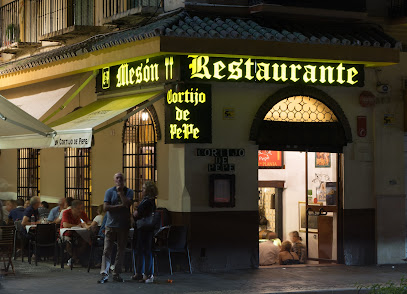
Uvedoble Taberna
Experience authentic Andalusian tapas at Uvedoble Taberna in Málaga – where tradition meets modern culinary creativity.
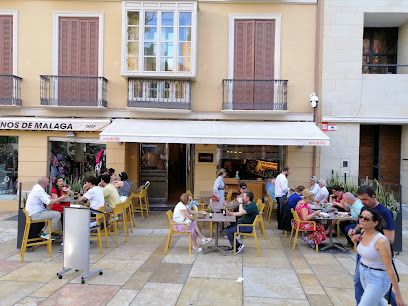
Kraken Centro - Tapas Restaurant
Experience authentic Spanish tapas at Kraken Centro in Málaga - where flavor meets tradition in every bite.

L'expérience
Discover the essence of Mediterranean cuisine at L'expérience in Málaga - where tradition meets modern culinary artistry.
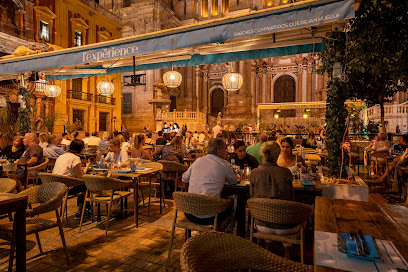
Palocortado Málaga
Discover exquisite dining at Palocortado Málaga, where traditional Andalusian flavors meet modern culinary artistry in an elegant setting.
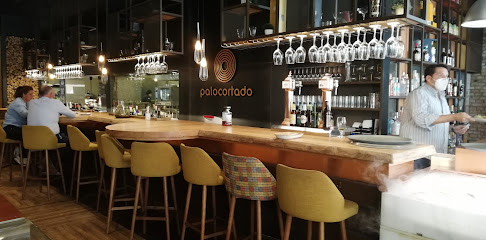
La Sole del Pimpi
Discover La Sole del Pimpi: Where Asian Fusion Meets Mediterranean Flavors in the Heart of Málaga.
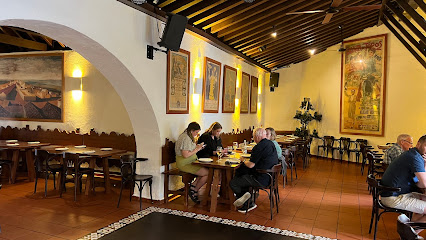
Madeinterranea
Experience the best of Mediterranean cuisine at Madeinterranea in Málaga—where tradition meets innovation in every bite.
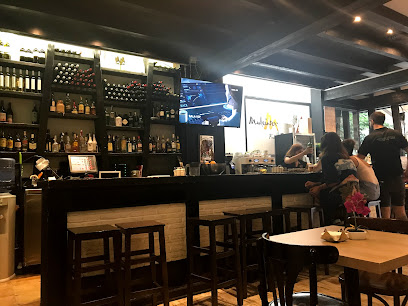
Markets, malls and hidden boutiques
Centro Comercial Larios Centro
Experience the ultimate shopping destination at Larios Centro, Málaga's premier mall with shops, dining, and entertainment for everyone.
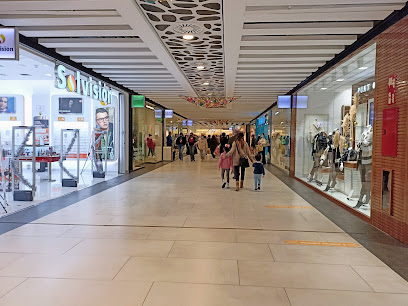
Primark
Experience stylish and affordable shopping at Primark in Málaga, the ultimate destination for budget-friendly fashion and home decor.
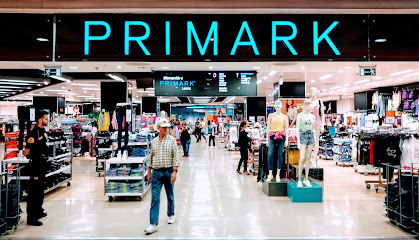
Designer Outlet Malaga
Discover unbeatable deals and luxury brands at Designer Outlet Malaga, the premier shopping destination in Málaga.
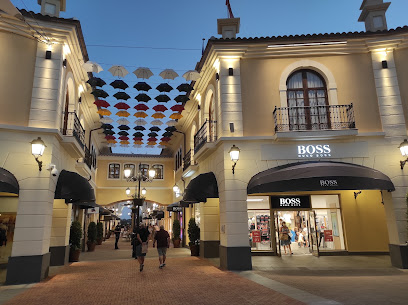
Disaster Street Wear
Explore Málaga's vibrant streetwear scene at Disaster Street Wear, the ultimate destination for unique clothing and skate gear.
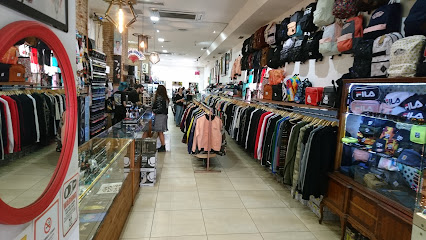
Natura
Discover a charming gift shop in Málaga, Natura, offering unique clothing and home goods that capture the spirit of the region.
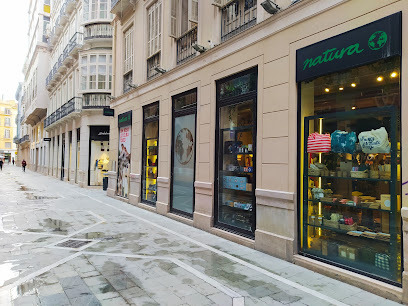
ALE-HOP
Explore ALE-HOP in Málaga for unique gifts and delightful souvenirs that capture the city's vibrant spirit and creativity.
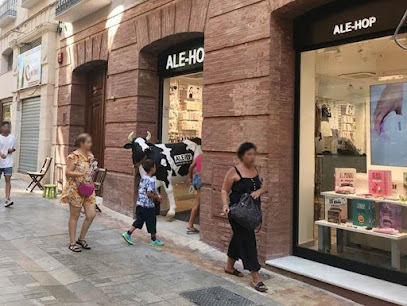
D´ Málaga
Explore D´ Málaga, your ultimate souvenir store in the heart of the city, offering handcrafted treasures and local artistry.
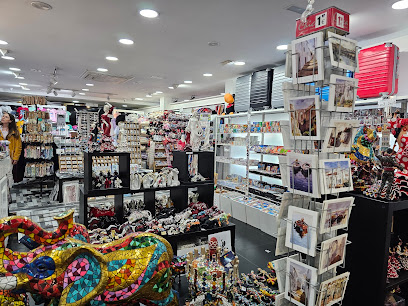
Nice Things Paloma S.
Discover trendy fashion and unique accessories at Nice Things Paloma S. in Málaga, the perfect boutique for style-savvy travelers.
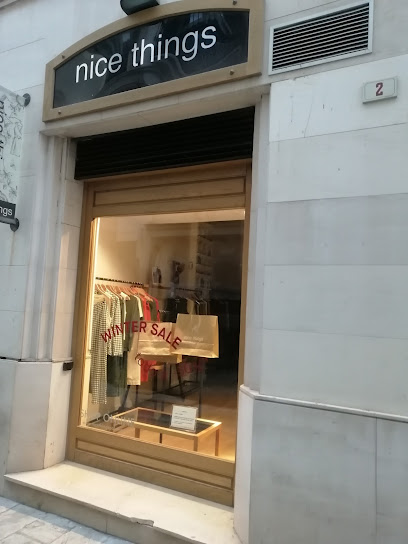
Málaga Store
Explore Málaga Store for unique souvenirs, local crafts, and essential travel maps in the heart of Málaga's vibrant Centro district.
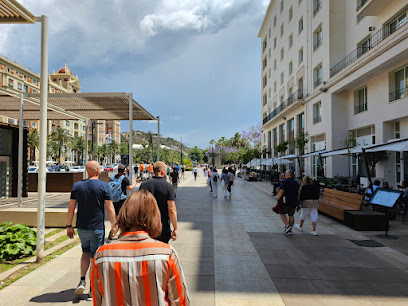
Shopping Malaga
Explore the vibrant shopping scene in Málaga, featuring diverse clothing options and a lively atmosphere that enhances your retail experience.
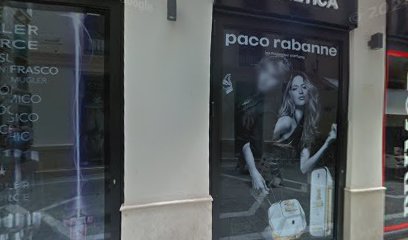
Sensse Boutique Málaga
Explore Sensse Boutique Málaga for unique, stylish dresses and accessories that capture the vibrant essence of Málaga's fashion scene.
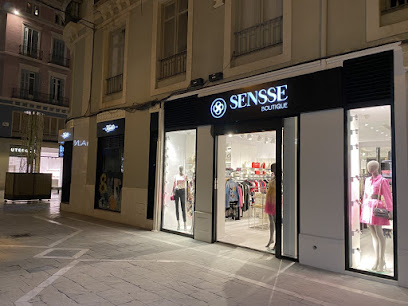
Coquette Boutique Málaga
Explore the stylish collection at Coquette Boutique Málaga, where fashion meets elegance in the heart of the city.

Essential bars & hidden hideouts
Picasso Bar Tapas
Discover the vibrant flavors of Spain at Picasso Bar Tapas in Málaga, where each dish tells a story of Mediterranean culinary tradition.
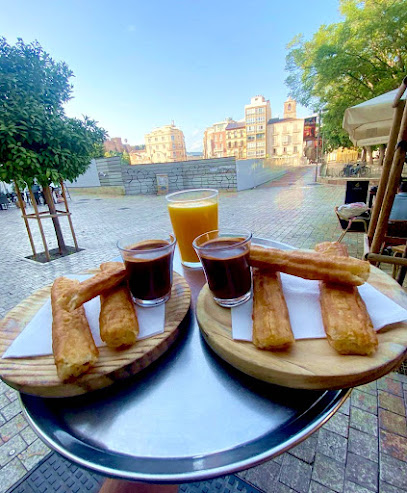
Antigua Casa de Guardia
Discover the charm of Antigua Casa de Guardia, Málaga's historic tavern known for its exquisite wines and delicious traditional tapas.

Premier Room Center
Discover the vibrant nightlife of Málaga at Premier Room Center, a lively pub offering a unique atmosphere, crafted cocktails, and local delights.
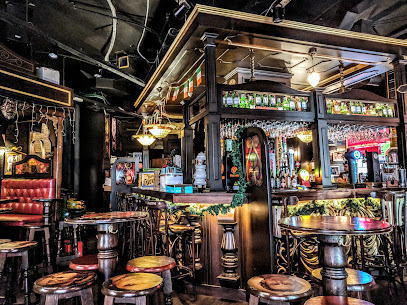
The Carmen Gay Bar
Experience the vibrant nightlife and delicious tapas at The Carmen Gay Bar, a must-visit spot in Málaga's lively Centro district.
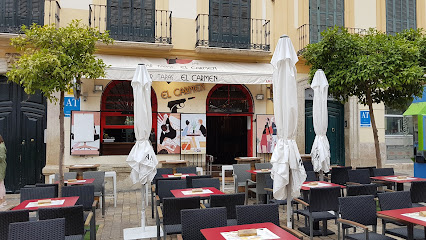
Sherlock Holmes
Discover the charm of Sherlock Holmes pub in Málaga, a perfect blend of classic British hospitality and a vibrant cocktail scene.
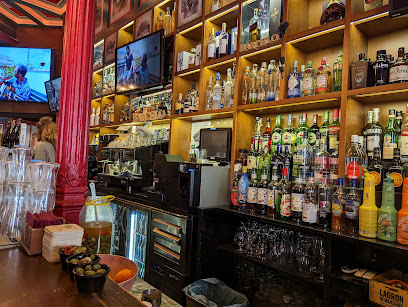
La Terraza De Valeria
Discover La Terraza De Valeria, a stylish rooftop bar in Málaga offering stunning views, exquisite cocktails, and an unforgettable atmosphere for all visitors.
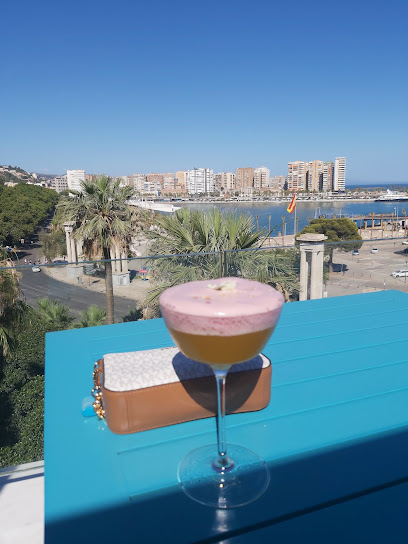
Chester & Punk - Málaga
Discover Chester & Punk in Málaga for an exceptional cocktail experience with artistic drinks and a lively atmosphere, perfect for night owls.
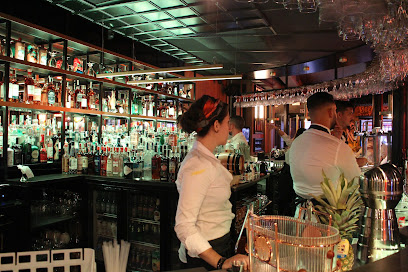
Mañana Cocktail Bar Malaga
Discover the vibrant atmosphere and innovative cocktails at Mañana Cocktail Bar in Málaga, a must-visit for nightlife lovers.

CHLOE Bar - Málaga
Discover CHLOE Bar in Málaga: A cocktail haven with vibrant nightlife and a welcoming atmosphere perfect for tourists.
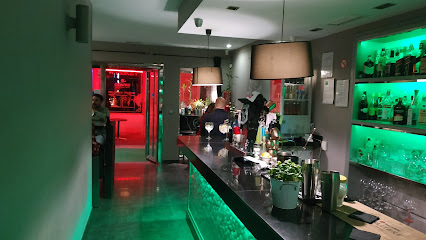
Con-bo Strachan Bar
Discover the lively Con-bo Strachan Bar in Málaga, where great drinks and a vibrant atmosphere await in the heart of the city.
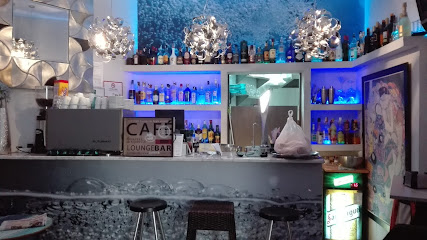
Local Phrases
-
- HelloHola
[o-la] - GoodbyeAdiós
[a-di-ós] - YesSí
[sí] - NoNo
[no] - Please/You're welcomePor favor/De nada
[por fa-vor/de na-da] - Thank youGracias
[gra-cias] - Excuse me/SorryPerdón/Lo siento
[per-dón/lo sien-to] - How are you?¿Cómo estás?
[¿có-mo es-tás?] - Fine. And you?Bien. ¿Y tú?
[bien. ¿y tú?] - Do you speak English?¿Hablas inglés?
[¿ha-blas in-glés?] - I don't understandNo entiendo
[no en-tien-do]
- HelloHola
-
- I'd like to see the menu, pleaseQuisiera ver la carta, por favor
[ki-sie-ra ver la car-ta, por fa-vor] - I don't eat meatNo como carne
[no co-mo car-ne] - Cheers!¡Salud!
[¡sa-lud!] - I would like to pay, pleaseMe gustaría pagar, por favor
[me gus-ta-ría pa-gar, por fa-vor]
- I'd like to see the menu, pleaseQuisiera ver la carta, por favor
-
- Help!¡Ayuda!
[¡a-yu-da!] - Go away!¡Vete!
[¡ve-te!] - Call the Police!¡Llama a la policía!
[¡ya-ma a la po-li-cía!] - Call a doctor!¡Llama a un médico!
[¡ya-ma a un mé-di-co!] - I'm lostEstoy perdido/a
[es-toy per-di-do/a] - I'm illEstoy enfermo/a
[es-toy en-fer-mo/a]
- Help!¡Ayuda!
-
- I'd like to buy...Me gustaría comprar...
[me gus-ta-ría com-prar...] - I'm just lookingSolo estoy mirando
[so-lo es-toy mi-ran-do] - How much is it?¿Cuánto cuesta?
[¿cuan-to cues-ta?] - That's too expensiveEsto es demasiado caro
[es-to es de-ma-sia-do ca-ro] - Can you lower the price?¿Puedes bajar el precio?
[¿pue-des ba-jar el pre-cio?]
- I'd like to buy...Me gustaría comprar...
-
- What time is it?¿Qué hora es?
[¿qué ho-ra es?] - It's one o'clockEs la una
[es la u-na] - Half past (10)Las diez y media
[las diez y me-dia] - MorningMañana
[ma-ña-na] - AfternoonTarde
[tar-de] - EveningNoche
[no-che] - YesterdayAyer
[a-yer] - TodayHoy
[hoy] - TomorrowMañana
[ma-ña-na] - 1Uno
[u-no] - 2Dos
[dos] - 3Tres
[tres] - 4Cuatro
[cua-tro] - 5Cinco
[cin-co] - 6Seis
[seis] - 7Siete
[siete] - 8Ocho
[o-cho] - 9Nueve
[nue-ve] - 10Diez
[diez]
- What time is it?¿Qué hora es?
-
- Where's a/the...?¿Dónde está un/el...?
[¿dón-de es-tá un/el...?] - What's the address?¿Cuál es la dirección?
[¿cual es la di-rec-ción?] - Can you show me (on the map)?¿Puedes mostrarme (en el mapa)?
[¿pue-des mos-trar-me (en el ma-pa)?] - When's the next (bus)?¿Cuándo es el próximo (autobús)?
[¿cuan-do es el pró-xi-mo (au-to-bús)?] - A ticket (to ....)Un billete (a ...)
[un bi-lle-te (a ...)]
- Where's a/the...?¿Dónde está un/el...?
History of Malaga Centro
-
Málaga Centro's history begins with its founding by the Phoenicians around 800 BC, when it was known as Malaka. The city's location along the Mediterranean made it a crucial trading post, facilitating commerce between various ancient civilizations. Remnants of trading activities from this era can still be observed in the archaeological sites around the city.
-
Under Roman rule, from the 2nd century BC, Málaga Centro flourished as a vital port and urban center. The construction of public buildings, baths, and the amphitheater reflects the city's importance during this time. The Roman influence is still evident in the ruins that can be seen throughout the neighborhood, including the Roman Theater, which dates back to the 1st century BC.
-
In the 8th century, Málaga fell under Muslim control, becoming part of the Umayyad Caliphate. This period saw significant cultural and architectural developments in Málaga Centro, including the construction of the Alcazaba fortress and the introduction of advanced agricultural practices. The influence of Islamic culture is a defining characteristic of the city's identity, with many historical sites reflecting this rich heritage.
-
The Reconquista concluded in 1487 when Catholic Monarchs Ferdinand and Isabella captured Málaga. This event marked a significant shift in the city's cultural landscape, leading to the construction of new churches and the suppression of the Muslim population. The impact of this historical transition is still felt in Málaga Centro, where Gothic and Renaissance architecture can be found intermixed with remnants of the Islamic past.
-
By the 19th century, Málaga Centro began to experience industrial growth, driven by the export of agricultural products and the establishment of factories. The expansion of the port and the railway system facilitated trade and tourism, transforming Málaga into a modern urban center. This era of development laid the groundwork for the contemporary Málaga that visitors experience today.
-
The 20th century brought about a cultural renaissance in Málaga Centro, with the rise of the arts, literature, and music. The establishment of cultural institutions, such as the Picasso Museum, highlights the city's commitment to preserving and promoting its rich artistic heritage. This period also saw the restoration of many historical buildings, making the neighborhood a vibrant hub of cultural activity.
Malaga Centro Essentials
-
Malaga Centro is easily accessible from various neighborhoods in Málaga. For those arriving by train, the Málaga María Zambrano station is the main hub, with frequent connections to other areas. From the station, you can take Line 1 of the metro, which connects directly to the city center. Buses also operate regularly from other neighborhoods; the local bus service (EMT) has numerous routes that stop in the Centro district. Taxis and ride-sharing services are widely available and offer a convenient option for reaching Malaga Centro.
-
Malaga Centro is well-connected and pedestrian-friendly, making it easy to explore on foot. Public transport options include the metro, which is efficient for reaching key areas, and buses that cover the entire city. For those who prefer cycling, Málaga has a bike-sharing program called 'Malagabici,' with stations throughout the city. Additionally, taxis and ride-sharing services are readily available for longer distances or late-night travel.
-
Malaga Centro is generally safe for tourists, but it’s wise to take standard precautions. Pickpocketing can occur in crowded areas, especially near popular attractions like the Cathedral and Calle Larios. It is advisable to avoid poorly lit streets at night and remain vigilant with personal belongings. Areas such as the outskirts of La Malagueta beach can have higher crime rates, particularly after dark, so exercise caution.
-
In case of an emergency, dial 112 for immediate assistance in Spain. This number will connect you to police, fire, and medical services. The nearest hospital in Malaga Centro is Hospital Civil, which provides comprehensive emergency care. It’s advisable to familiarize yourself with the location of pharmacies, which are plentiful and can assist with minor health issues.
-
Fashion: Do wear comfortable shoes for walking, as many streets are cobbled. Don’t wear overly casual beach attire outside of beach areas. Religion: Do respect local customs when visiting churches, including covering shoulders and knees. Public Transport: Do be courteous and offer your seat to the elderly. Don’t talk loudly or eat on public transport. Greetings: Do greet locals with a friendly 'Hola' and a smile. Don’t be overly formal; the culture is generally relaxed. Eating & Drinking: Do try local tapas and enjoy meals leisurely. Don’t rush through meals; dining is a social experience.
-
To experience Malaga Centro like a local, visit Mercado de Atarazanas for fresh produce and local delicacies. Engage with shopkeepers and ask for recommendations. Try to learn a few basic Spanish phrases, as locals appreciate the effort. For a true local experience, enjoy a late-night stroll along the promenade and stop by a chiringuito (beach bar) for fresh seafood. Don’t miss the chance to attend a flamenco show, as it’s an integral part of Andalusian culture.
Trending Landmarks in Malaga Centro
Nearby Cities to Malaga Centro
-
Things To Do in Ronda
-
Things To Do in Catalan Bay
-
Things To Do in Moorish Castle
-
Things To Do in Casemates Square
-
Things To Do in Gibraltar
-
Things To Do in Main Street
-
Things To Do in St. Michael's Cave
-
Things To Do in Alameda Botanic Gardens
-
Things To Do in Queensway Quay Marina
-
Things To Do in Gorham's Cave Complex
-
Things To Do in Europa Point
-
Things To Do in Tetouan
-
Things To Do in Seville
-
Things To Do in Tangier
-
Things To Do in Cádiz

